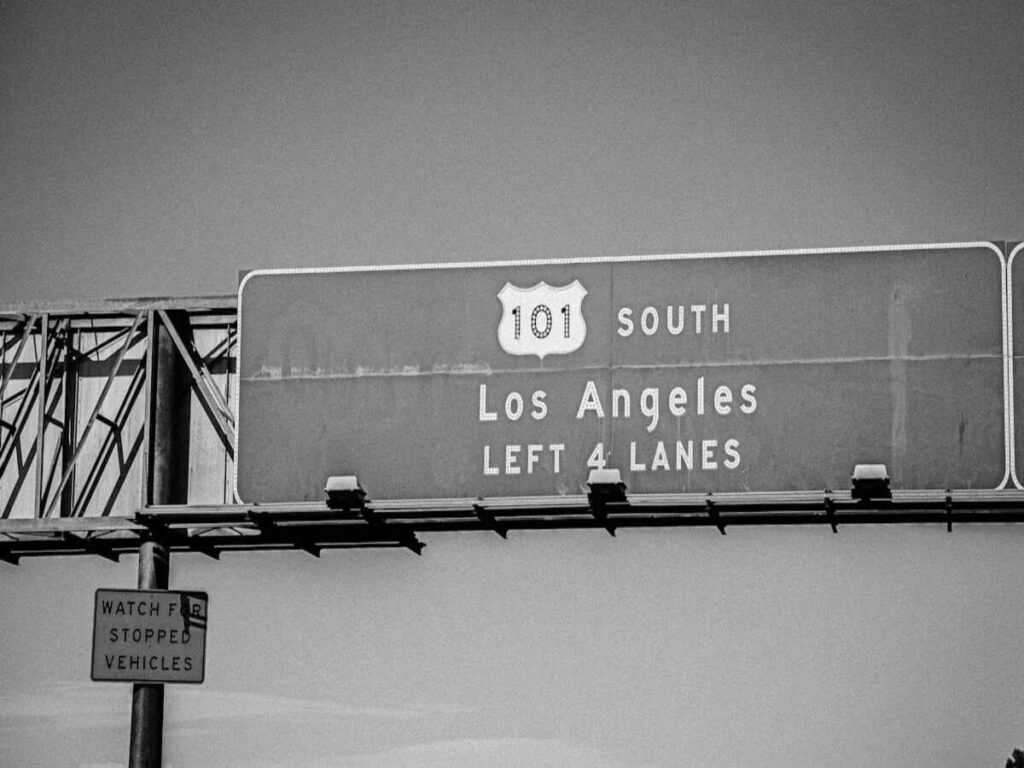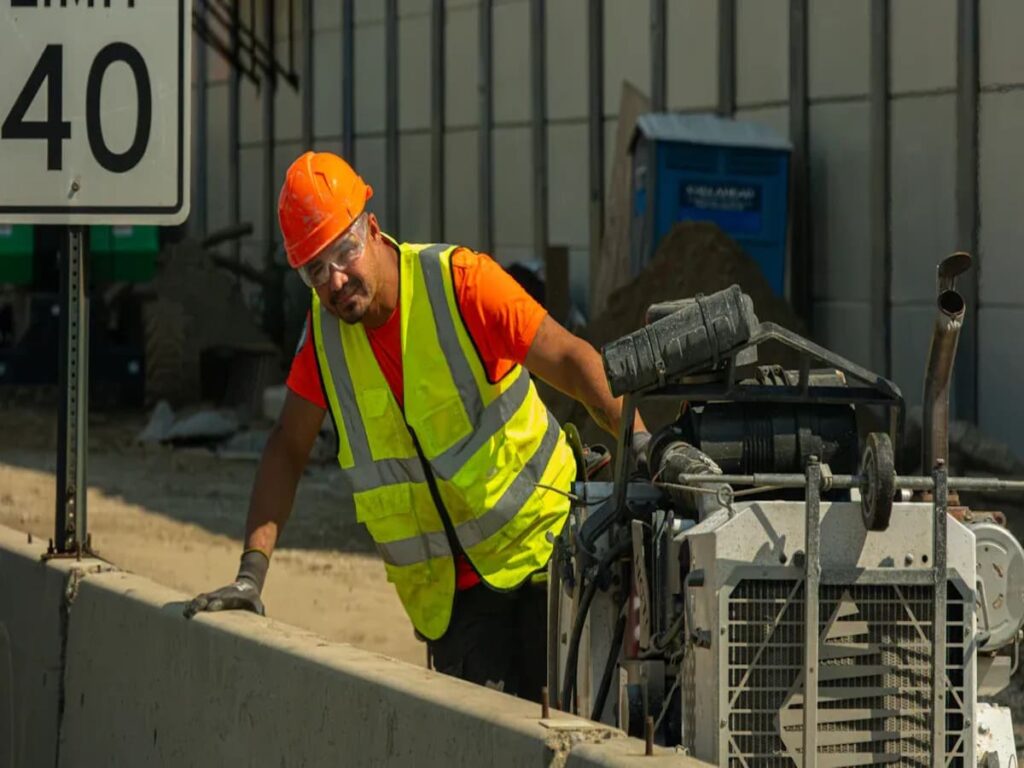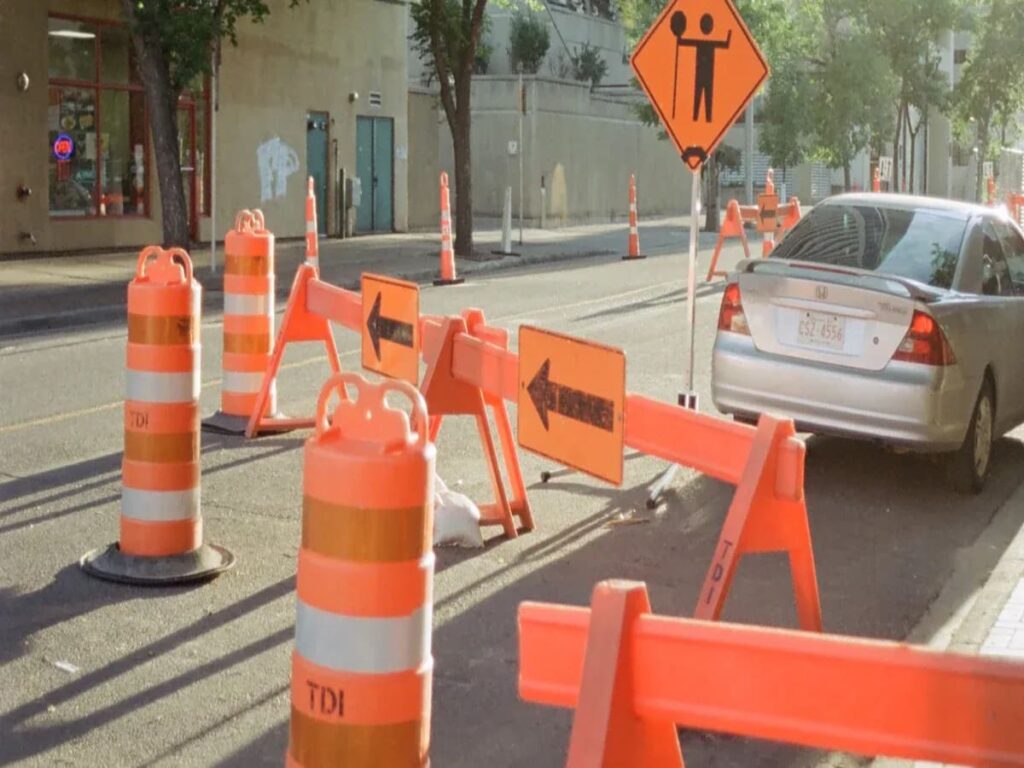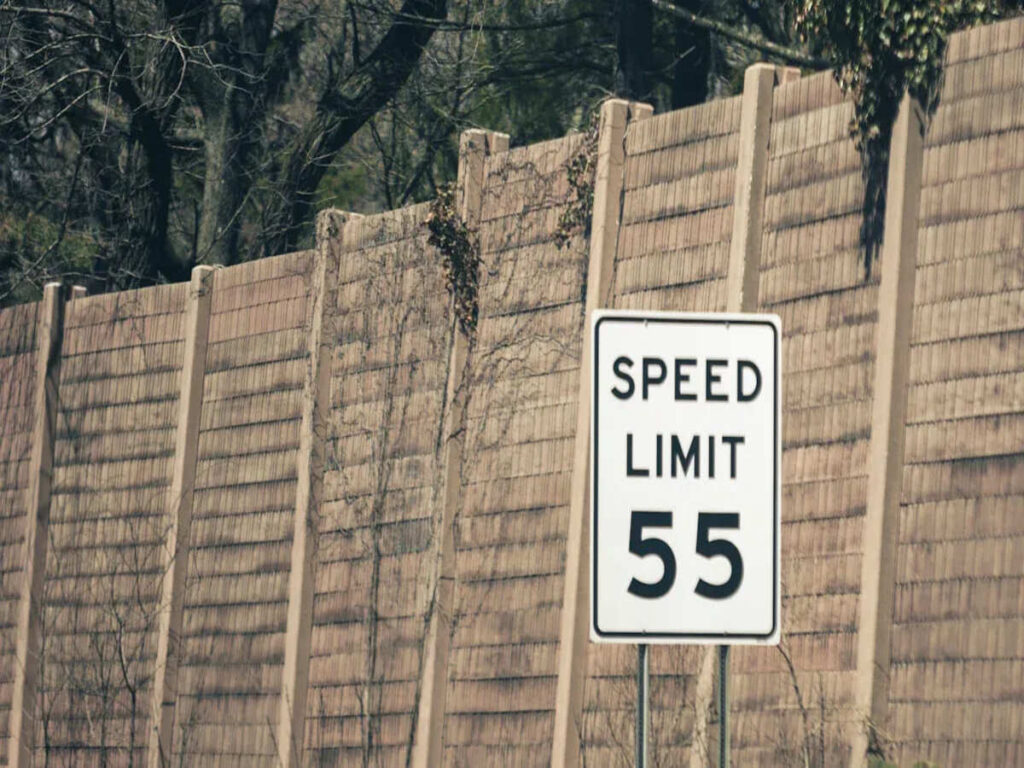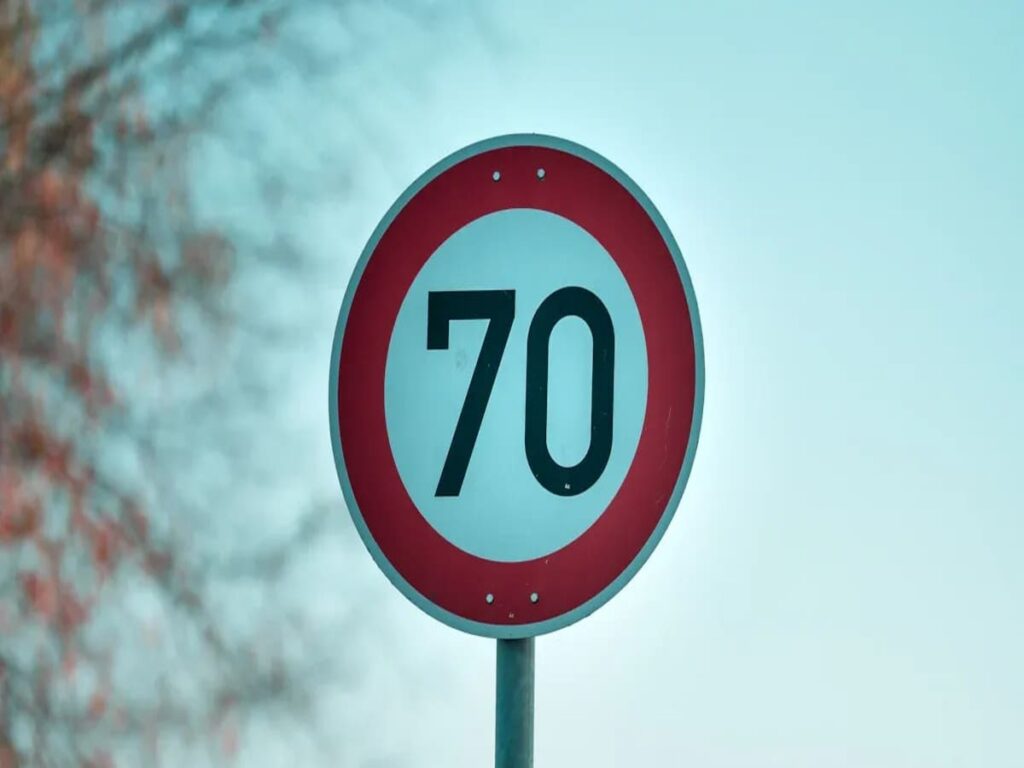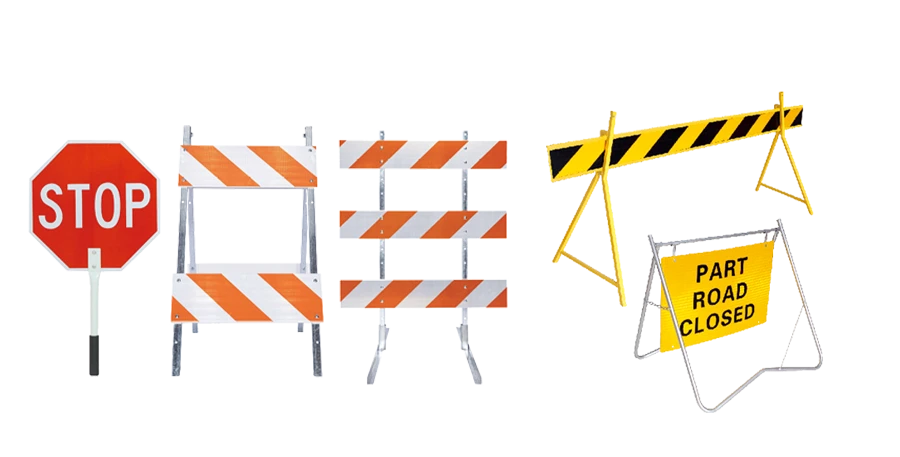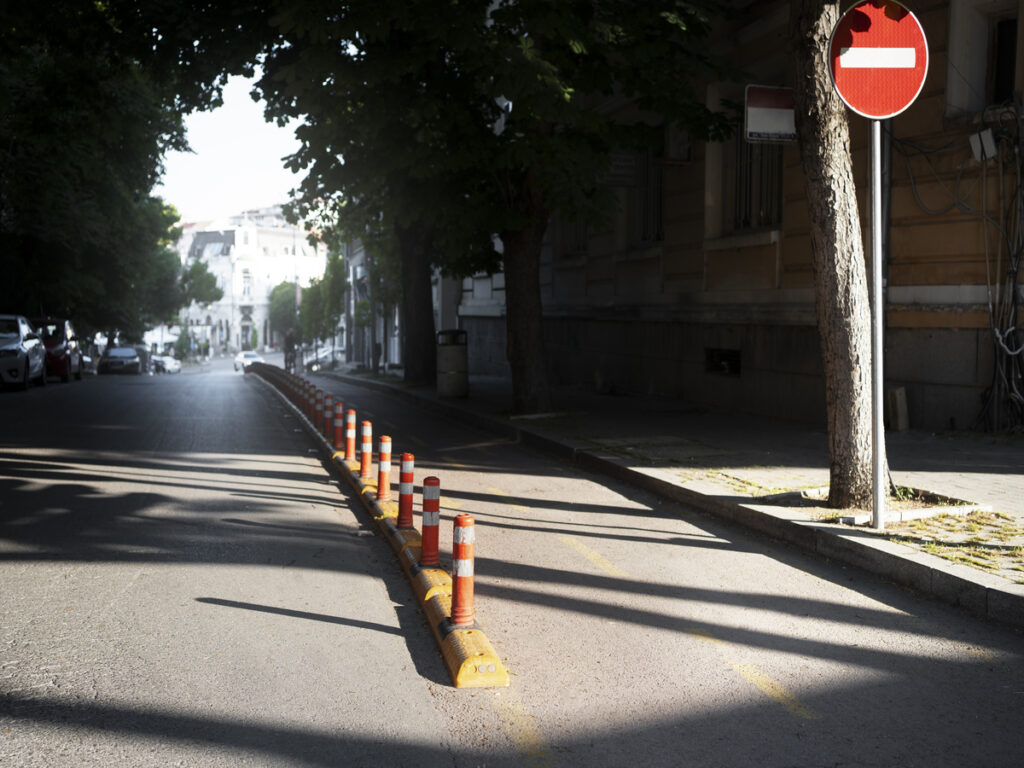
Channelizers and road delineators are essential traffic control devices that enhance road safety and traffic flow, especially in construction zones, highways, and high-risk areas. Understanding their differences is crucial when choosing the right device for your specific traffic needs. For the most durable and high-quality channelizer devices, look no further than OPTRAFFIC’s Channelizer Cone Delineators and T-Top Bollards, designed for optimal visibility and safety.
Channelizers act as physical barriers that separate lanes and guide vehicles or pedestrians. They improve safety by preventing accidents and ensuring smooth traffic flow. These devices also enhance visibility, especially in low-light conditions.
Road delineators, on the other hand, provide visual guidance. They help drivers identify road boundaries and navigate safely. Unlike channelizers, road delineators are not physical barriers but serve as markers to direct traffic. This distinction makes channelizers ideal for controlling movement, while road delineators excel in offering clear visual cues.
Definitions and Features

What Are Channelizers?
Materials and Design
Channelizers are constructed using durable materials like plastic, rubber, or metal. These materials ensure they can withstand heavy impacts and harsh weather conditions. You will often see channelizers designed in bright colors, such as orange or yellow, to enhance visibility. Many include reflective strips or panels to improve their effectiveness at night. Their design often features a sturdy base to prevent tipping and a vertical structure to act as a clear physical barrier.
Functionality and Purpose
Channelizers serve as physical barriers to control traffic flow. They guide vehicles into specific lanes, separate opposing traffic, or protect pedestrians in construction zones. You might notice them on highways, near toll booths, or in areas with high traffic volume. Their primary purpose is to enhance safety by preventing vehicles from crossing into restricted areas. Channelizers also help reduce confusion for drivers by clearly marking boundaries.
To see how channelizing devices are used in modern roadway redesigns like road diets, check out our blog: Channelizing Devices for Road Diet: A Comprehensive Guide to Safer Roadway Reconfiguration.
It explores how these tools support safer, more efficient traffic flow in today’s evolving urban environments.
OPTRAFFIC offers Channelizer Cone Delineators, designed for maximum durability and visibility. These high-quality channelizers provide effective traffic control, ensuring safety and efficiency in various environments. Explore OPTRAFFIC for reliable and long-lasting channelizer solutions.
What Are Road Delineators?
Materials and Design
Road delineators are typically made from lightweight materials like plastic or fiberglass. These materials make them easy to install and replace. You will find them in various shapes and sizes, but most feature a slim, vertical design. Bright colors and reflective surfaces are common, ensuring they remain visible in all lighting conditions. Unlike channelizers, road delineators are not designed to act as physical barriers.
Functionality and Purpose
Road delineators provide visual guidance to drivers. They mark road edges, curves, or other critical areas where visibility is essential. You will often see them on rural roads, highways, or areas with sharp turns. Their primary role is to help drivers stay within their lanes and navigate safely. Road delineators are especially useful in low-light or adverse weather conditions, where clear visual cues are crucial.
OPTRAFFIC offers a variety of high-quality road delineators like T-Top Bollards , designed to enhance safety and visibility in all driving conditions. OPTRAFFIC durable and reflective models ensure reliable performance, making them an excellent choice for effective traffic management.
Key Differences

Durability and Impact Resistance: Channelizers vs. Road Delineators
Material Strength and Longevity
When it comes to durability, channelizers and delineators differ significantly. Channelizers are built to endure heavy impacts from vehicles. Their robust materials, such as rubber or metal, ensure they last longer even in high-traffic areas. In contrast, road delineators are less durable. Their lightweight construction makes them more prone to damage under similar conditions.
| Feature | Channelizers | Delineators |
|---|---|---|
| Durability | Capable of withstanding numerous vehicular impacts | Generally less durable under similar conditions |
Resistance to Weather and Impact
Channelizers excel in resisting harsh weather and repeated impacts. Their sturdy design allows them to maintain functionality in extreme heat, cold, or rain. Delineators, while weather-resistant, may not hold up as well under constant exposure to severe conditions. You might notice that road delineators require more frequent replacements in areas with heavy traffic or adverse weather.
Visibility: Channelizers vs. Delineators
Reflective Properties
Channelizers offer excellent visibility, especially at night. Their high-intensity reflective materials make them easily noticeable from a distance, aiding drivers in identifying lane boundaries or obstacles promptly and adjusting their driving safely. This enhanced visibility is crucial in low-light conditions.
In contrast, while delineators also utilize reflective surfaces, their narrower profile and smaller reflective area may not provide the same level of effectiveness as channelizers in poor lighting conditions, particularly in high-speed traffic environments.
Notably, the 2024 update to the Manual on Uniform Traffic Control Devices (MUTCD) by the Federal Highway Administration (FHWA) emphasizes the importance of maintaining minimum retroreflectivity levels for traffic control devices, including channelizers, to ensure safety during nighttime and low-visibility conditions.
Daytime vs. Nighttime Effectiveness
During the day, both channelizers and road delineators perform well due to their bright colors. At night, however, channelizers stand out. They improve roadway visibility in low-light conditions and help drivers prepare for changes in traffic flow. Delineators, while visible, may not provide the same level of guidance in darker environments.
- Channelizers improve roadway visibility during low-light conditions.
- The reflective materials used in channelizers enhance their visibility from a distance.
- This allows drivers to prepare for changes in driving conditions effectively.
Cost
Initial Investment
Channelizers typically require a higher initial investment. Their durable materials and complex designs contribute to their cost. Delineators on road, being simpler and lighter, are more affordable upfront. This makes road delineators a popular choice for temporary or low-budget projects.
Maintenance and Replacement Costs
Over time, channelizers prove cost-effective due to their longevity. They require less frequent replacement, even in high-traffic areas. Delineators on road, while cheaper initially, may incur higher maintenance costs. Their lower durability means you might need to replace them more often, especially in demanding environments.
Safety Impact
Effectiveness in Preventing Accidents
Channelizers and delineators both play critical roles in reducing crashes and improving road safety. Channelizers guide drivers along the correct path, which minimizes confusion and helps prevent accidents. You often see them in construction zones or areas with complex road layouts. Their reflective materials enhance visibility, especially in low-light conditions, making them highly effective at night.
Delineators, while not physical traffic barriers, also contribute to accident prevention. They provide clear visual cues that help drivers stay within their lanes. This guidance is particularly useful on rural roads or sharp curves where boundaries might be less obvious. By marking road edges and critical areas, lane delineators reduce the likelihood of vehicles veering off course.
- Channelizers reduce confusion by guiding drivers on the correct path.
- Their reflective surfaces improve visibility, especially in low-light environments.
- Delineators offer visual guidance, helping drivers navigate safely through challenging areas.
Suitability for High-Risk Areas
In high-risk areas, such as highways or zones with high-speed traffic, channelizers prove to be an excellent choice. They direct traffic effectively and improve visibility, which is crucial when vehicles are moving at high speeds. Their sturdy design prevents vehicles from crossing into restricted zones, reducing the risk of severe crashes. Reflective materials further enhance their visibility, ensuring drivers remain aware of lane boundaries even in poor lighting.
Delineators, while effective in marking boundaries, may not provide the same level of safety in high-risk areas. Their lightweight design makes them less suitable for zones with heavy traffic or high speeds. However, they work well in less demanding environments, such as rural roads or temporary setups.
- Channelizers improve safety in high-speed traffic areas by guiding vehicles and reducing confusion.
- Their reflective materials enhance visibility, aiding driver awareness in low-light conditions.
- Delineators are better suited for low-risk or temporary applications.
By understanding the strengths of each device, you can choose the right option to enhance safety and reduce crashes in any environment.
Choosing the Right Traffic Device: Channelizers vs. Road Delineators
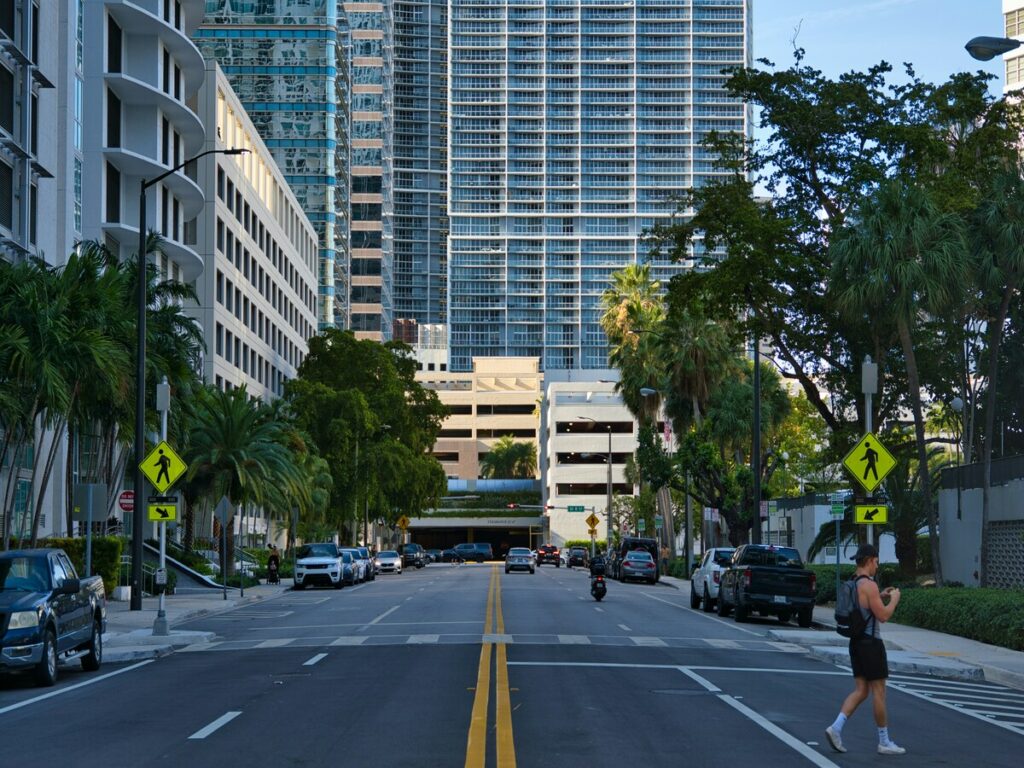
Factors to Consider
Traffic Volume and Speed
When selecting traffic safety equipment, you should evaluate the volume and speed of vehicles in the area. High-traffic zones or highways with fast-moving vehicles demand a higher level of protection. Channelizers, with their sturdy design, excel in such environments. They separate lanes effectively and guide traffic safely. In contrast, lane delineators work well in areas with moderate traffic or slower speeds. Their lightweight design makes them ideal for marking boundaries without obstructing movement.
Environmental Conditions
Environmental factors play a crucial role in choosing the right equipment. Channelizers perform well in work zones with harsh weather conditions. Their durable materials resist extreme heat, cold, and rain. Delineators, however, offer flexibility in adverse weather. They bend upon impact and return to their original position, making them reliable in areas prone to strong winds or heavy snowfall. For construction sites or rural roads, you should consider how each option withstands environmental challenges.
Budget Constraints
Budget often influences your choice of traffic safety equipment. Channelizers require a higher initial investment due to their robust design and materials. However, their longevity makes them cost-effective for long-term projects. Delineators, being lightweight and affordable, suit budget-constrained projects. Their ease of installation and low replacement costs make them a practical choice for temporary setups or smaller-scale applications.
Key Clarification: Channelizers Are a Type of Delineator
You might wonder how channelizers and lane delineators relate to each other. The answer lies in their shared purpose. Both aim to guide traffic and improve safety. However, channelizers represent a specialized type of delineator on road. Their design and functionality set them apart from other lane delineators.
How Channelizers Differ from Other Delineators
Channelizers stand out due to their robust design and ability to act as physical barriers. Unlike standard delineators on road, which primarily provide visual guidance, channelizers combine visual and physical elements to control traffic effectively. The table below highlights the key distinctions:
| Feature | Channelizers | Delineators |
|---|---|---|
| Design | Affixed to pavement, robust | Generally portable, less robust |
| Function | Create visual barriers, guide traffic | Provide basic guidance |
| Application | Used in complex environments | Used in simpler traffic situations |
Unique Features of Channelizers
- Channelizers withstand vehicular impacts, making them ideal for high-risk areas.
- They create a visual barrier that guides traffic and prevents lane violations.
- You will often see them used in series to enhance traffic control in construction zones or highways.
Why This Matters
Understanding this distinction helps you choose the right tool for your traffic management needs. If you need a solution for complex or high-risk environments, channelizers offer the durability and functionality required. For simpler applications, standard delineators provide an affordable and effective option.
By recognizing channelizers as a type of delineator on road, you can better appreciate their role in traffic safety. This knowledge ensures you make informed decisions when selecting traffic guidance tools.
Understanding the differences between channelizers and delineators helps you make informed decisions for traffic management. Channelizers act as physical barriers, separating lanes and guiding vehicles in high-risk areas. Delineators, on the other hand, serve as visual markers, indicating lane boundaries and directions. Both devices improve traffic flow and reduce confusion, especially in complex or high-speed work zones.
Choosing the right tool depends on your specific needs. Channelizers provide positive protection barriers in road construction areas, ensuring worker protection and safety. Delineators on road excel in offering visual guidance in less demanding environments. By using these traffic control devices effectively, you enhance safety and efficiency on the roads.
FAQ
What is the difference between a traffic cone and a delineator?
A traffic cone is a cone-shaped, portable device typically used to temporarily redirect traffic. They are commonly found in short-term traffic control situations, like construction zones or detours. On the other hand, a delineator is a taller, thinner post with reflective strips, designed for guiding traffic over longer distances or defining lanes, especially in low-visibility conditions.
If you’re looking for reliable and durable traffic cones for sale, check out our range at OPTRAFFIC. Our high-quality cones are designed to withstand heavy use in any traffic control scenario.
What is a delineator in traffic?
A traffic delineator is a vertical post with reflective elements, installed along roadways to guide and warn drivers by indicating lane boundaries or road alignment. These devices are especially effective in low-visibility conditions like fog, rain, or night driving.
What is a channelizer in construction?
A channelizer is a traffic control device used to clearly define a path for vehicles or pedestrians, particularly in construction zones. They include devices like cones, drums, and barriers, designed to maintain traffic flow while keeping construction workers safe. To ensure the best traffic flow control, consider purchasing Channelizer Cone Delineators from OPTRAFFIC. Our durable and highly visible products provide robust protection in construction and high-traffic areas.
What is the difference between a channelizer and a road delineator?
A channelizer is a broader category that includes any device used to guide traffic, such as cones, barrels, and barriers. These are often used in high-traffic areas to physically separate lanes or paths. In contrast, a delineator is a specific type of vertical post used primarily for indicating alignment or lane division, especially in areas where visibility is compromised. Whether you need a channelizer or a delineator, OPTRAFFIC offers high-quality, durable solutions like Channelizer Cone Delineators and T-Top Bollards to meet your traffic control needs.
Can I buy channelizers and delineators in bulk?
Yes! At OPTRAFFIC, we offer both channelizers and road delineators for bulk purchase, ideal for large projects such as construction zones, highways, and city roads. Contact us for special rates on bulk orders and to find the best products tailored to your traffic safety needs.
Why should I choose OPTRAFFIC’s channelizers and delineators for sale?
OPTRAFFIC’s road channelizers and traffic delineators are designed to offer the highest visibility and durability in even the most challenging conditions. Whether you are managing traffic flow in construction zones or ensuring safety on highways, our products are built to last and help guide traffic effectively. For a limited time, enjoy discounts on bulk orders of our top-selling traffic control products.

